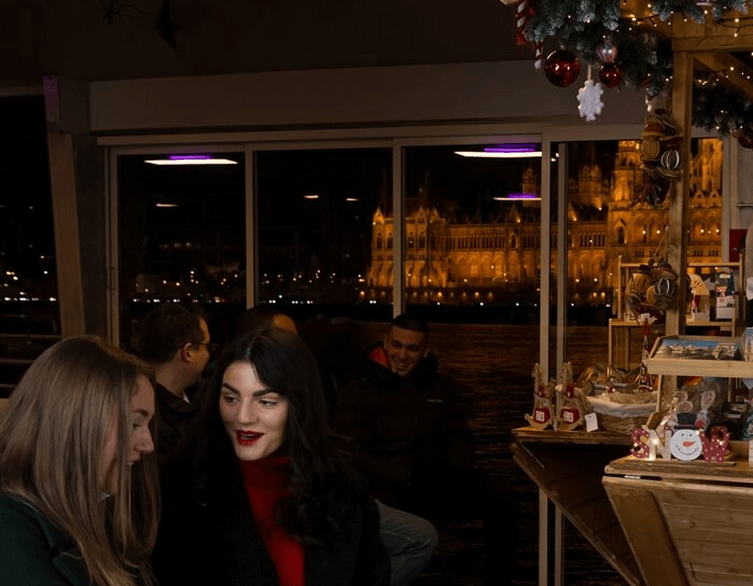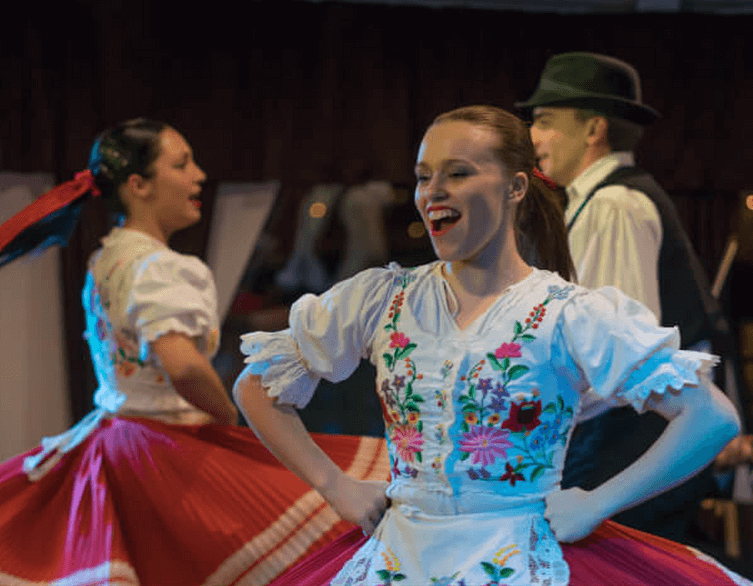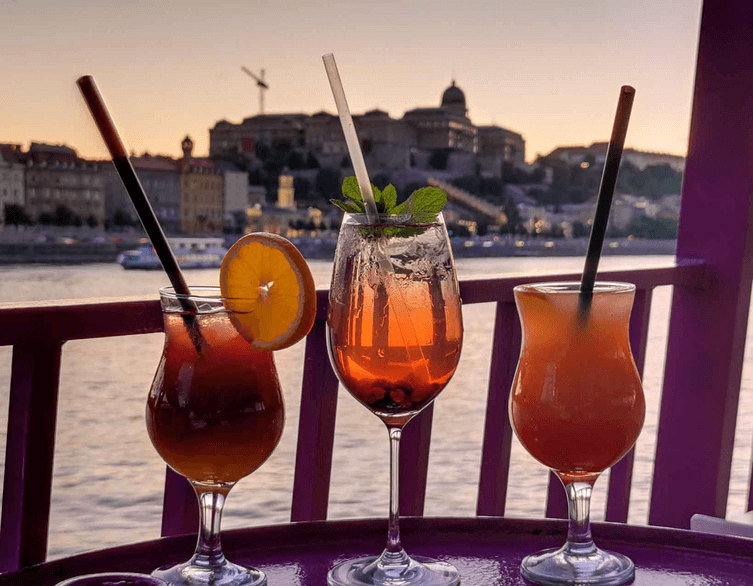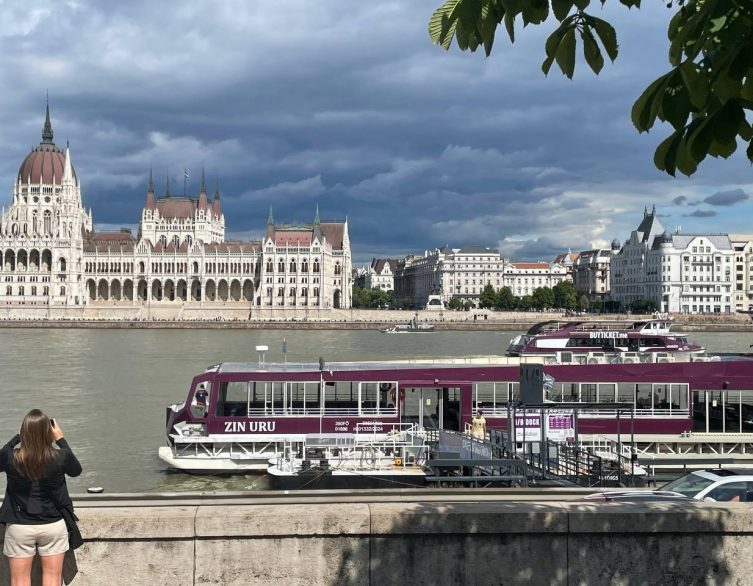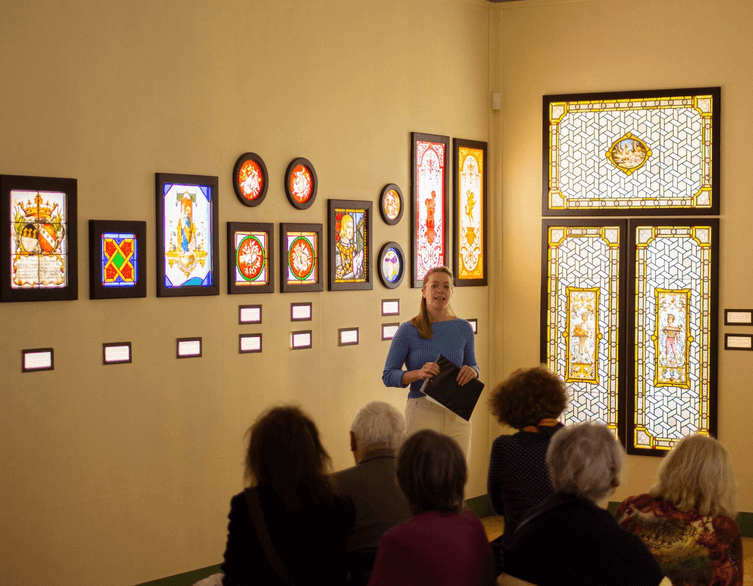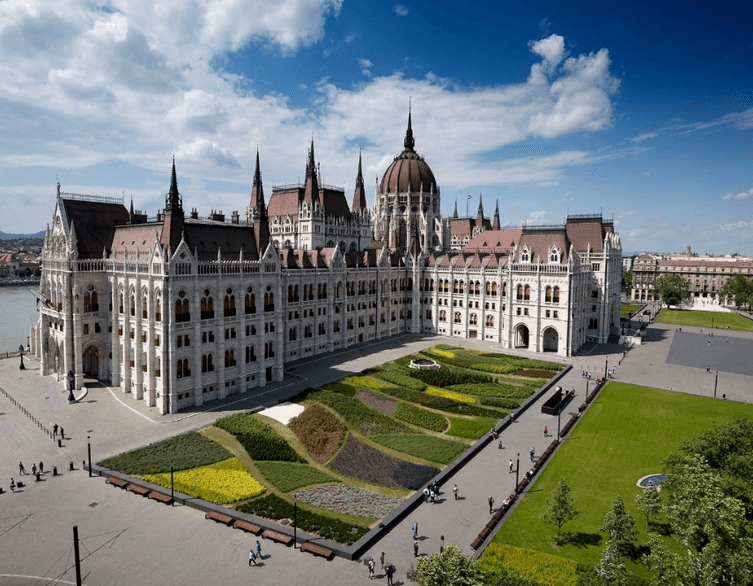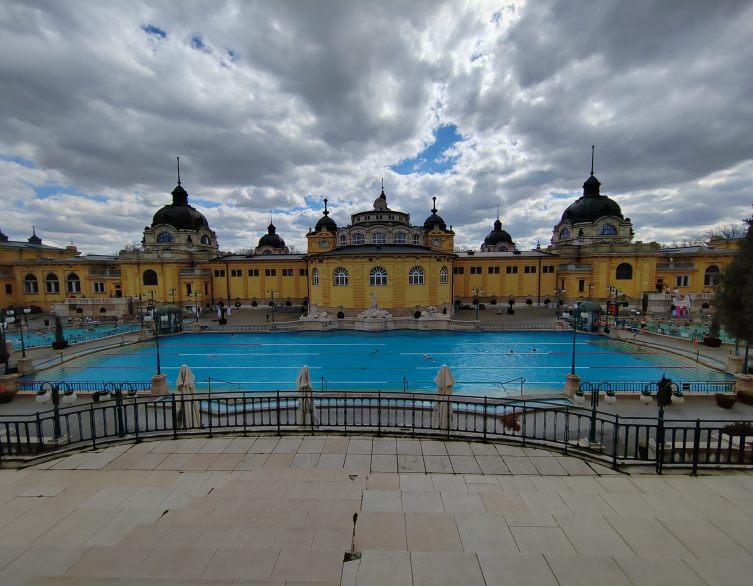Miksa Róth: The Master Who Painted Budapest in Glass and Light
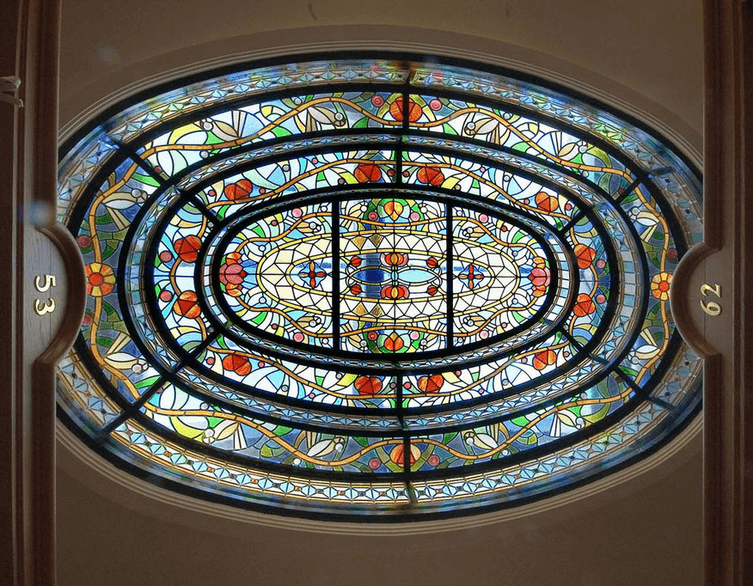
When you walk through Budapest today, you’re literally strolling through a living gallery of Art Nouveau masterpieces. Every turn reveals another stunning stained glass window or vibrant mosaic that transforms ordinary buildings into works of art. Behind most of these breathtaking creations stands one man: Miksa Róth (1865-1944), the visionary glass painter and mosaic artist who helped define Hungary’s artistic identity at the turn of the 20th century.
From the majestic Hungarian Parliament to the elegant Gresham Palace, from the Music Academy to countless private villas scattered throughout the city, Róth’s artistic fingerprints are everywhere. His story isn’t just about one artist’s journey – it’s about how creativity, innovation, and perfect timing can transform an entire city’s visual landscape.
From Humble Beginnings to Revolutionary Innovation
Born in Pest on December 26, 1865, into a family where glasswork was literally in his blood, Róth grew up surrounded by the magic of colored glass. His father, Zsigmond Róth, and grandfather were both master glaziers, and young Miksa spent countless childhood hours in his father’s workshop, mesmerized by the way light danced through colored panes.
“Those times hold my most cherished childhood memories,” Róth later recalled, “which I spent in my father’s workshop – who was one of the last guild masters. The brilliance and sparkle of the technically flawless but otherwise primitive leaded colored glazing gave me great joy even in my adolescent childhood, and with their mystical charm, they evoked deep impressions that would influence my entire life.”
This early exposure wasn’t just inspirational – it was educational. By watching his father create the stained glass windows for the Műcsarnok (Hall of Art), young Miksa absorbed not just techniques, but an understanding of how glass could tell stories and create emotions. After completing his studies at the Higher School of Industrial Drawing, Róth embarked on what would prove to be life-changing study tours across Western Europe. He traveled through Germany, Belgium, England, and France, where the Gothic cathedral windows made an indelible impression that would influence his artistic vision for decades.
At just 20 years old, in 1885, he established his independent “Glass Painting Art Institute.” This wasn’t just youthful ambition – it was perfect timing. Róth launched his career during Budapest’s greatest building boom, when rapid urbanization was creating unprecedented demand for decorative arts. His breakthrough came in 1896 with the Millennium Exhibition, followed by his work on the Hungarian Parliament building. These projects catapulted him from promising young artist to Hungary’s most sought-after glass painter and mosaic maker.
What set Róth apart wasn’t just artistic vision – it was his relentless drive to innovate. He revolutionized traditional mosaic techniques, becoming arguably the greatest modernizer of the craft. Where others followed established patterns, Róth experimented, refined, and invented. His artistic evolution took a dramatic turn when he discovered Tiffany glass – the revolutionary opalescent glass developed by American designer Louis Comfort Tiffany. Róth became the first to introduce this material to the Austro-Hungarian Empire, and his mastery of its unique properties helped launch the Art Nouveau movement in Hungarian decorative arts.
The opalescent glass’s distinctive color variations and luminous qualities perfectly matched the organic forms and flowing lines that defined Art Nouveau. Róth didn’t just use this material – he reimagined what was possible with colored glass, creating windows that seemed to glow from within. While studying mosaic-making in Venice, Róth absorbed traditional techniques but refused to be bound by them. His innovations included custom-cut pieces instead of using standard square tiles, mixing Tiffany glass with Zsolnay ceramics to create entirely new textures and effects, and becoming the first to create moveable mosaic pictures, expanding the art form beyond architectural decoration.
Collaboration and International Recognition
Róth’s success stemmed partly from his ability to collaborate with the era’s most celebrated architects and artists. He worked closely with Imre Steindl (architect of the Parliament building), Miklós Ybl (master of Hungarian historicist architecture), Ödön Lechner (the “Hungarian Gaudí”), and artists from the Gödöllő Colony, Hungary’s answer to the Arts and Crafts movement. These collaborations weren’t just professional relationships – they were creative partnerships that pushed each artist to greater heights. When Steindl invited Róth to participate in restoring the late Gothic church in Máriafalva, it allowed the glass painter to indulge his lifelong love of Gothic art while contributing to Hungary’s architectural heritage.
By the early 1900s, Róth’s reputation had spread far beyond Hungary’s borders. His achievements on the international stage were remarkable: a silver medal at the 1900 Paris World’s Fair for his “Peace” mosaic, gold medals at the 1902 Turin and 1904 St. Louis World’s Fairs, royal recognition as Imperial and Royal Court Artist, and selection as a jury member at international exhibitions (reportedly to give others a chance to win!). His works can be found in approximately 30 international locations, including Mexico City’s former National Theater (now Palace of Fine Arts) featuring an 180-square-meter glass dome depicting the eight muses, The Hague’s Royal Palace in the Netherlands, Fagerborg Church in Oslo, Norway, and the Hungarian Pavilion at the Venice Biennale.
Artistic Evolution and Technical Mastery
Róth’s long career spanned multiple artistic movements, and his genius lay in mastering each style while maintaining his distinctive vision. His early work, influenced by those formative cathedral visits, featured the deep colors and religious iconography of medieval glass painting. Though historically inspired, these pieces showed his emerging mastery of light and composition. From 1895-1915, during his Art Nouveau/Secession period, he produced his most celebrated works featuring flowing organic forms, stylized flowers, and allegorical figures. The introduction of Tiffany glass allowed him to achieve unprecedented subtlety in color transitions and luminous effects. As European taste shifted toward geometric patterns and streamlined forms during his Art Deco period (1915-1939), Róth adapted while maintaining his commitment to craftsmanship, creating works with cleaner lines and more abstracted forms without losing their decorative impact.
Throughout all these periods, Róth maintained what critics called “dekoratív szabadság” – decorative freedom. Even his most ornate works never felt cluttered, demonstrating his instinctive understanding of visual balance and harmony. Beyond artistic vision, Róth was a master technician who constantly pushed the boundaries of what was possible with glass and ceramic materials. He developed new methods for firing painted glass that achieved greater durability and more vibrant colors, created seamless combinations of different materials, worked with architects to develop mounting systems for larger installations, and invented portable mosaic panels that expanded the art form into fine art collecting.
Róth’s Budapest: A Living Gallery
Walking through Budapest today, you can’t escape Róth’s artistic legacy. His works appear on more than 70 documented locations throughout the city, ranging from massive glass surfaces to intimate decorative details. The Hungarian Parliament Building features some of his finest historical work, though sadly, the original dome frescoes were destroyed during World War II. The surviving delegations corridors and staircase windows showcase his mastery of Gothic revival style. The Gresham Palace (now Four Seasons Hotel) contains some of Róth’s most sophisticated stained glass work, where his technique perfectly complements the building’s elegant curves and organic motifs.
Best deals of Budapest
The Music Academy’s stunning windows demonstrate Róth’s ability to create art that enhances rather than competes with architecture, providing the perfect acoustic and visual environment for musical education. His mosaics at the Széchenyi Thermal Baths show how decorative art can transform functional spaces into transcendent experiences, making even a simple bath feel like entering an art palace. The Török Bank Building on Szervita Square houses Budapest’s largest public mosaic, “The Glorification of Hungaria,” a 50-square-meter masterpiece featuring Hungarian heroes including Lajos Kossuth, István Széchenyi, and Péter Pázmány alongside the allegorical figure of Hungaria herself.
Additional notable locations include the former Austrian-Hungarian Bank (now Hungarian National Bank), the Szeged Votive Church, the Lipótmező Mental Institute chapel, the Marosvásárhely Cultural Palace and City Hall, the Szabadka City Hall, the Szatmárnémeti former Royal Catholic High School, the Reformed Church on Kálvin Square, the Árpád Dynasty Saint Elizabeth Parish Church on Rózsák Square, the Pannonhalmi Benedictine Archabbey’s Saint Stephen Chapel, the Budapest-Fasor Evangelical Gymnasium’s ceremonial hall, the Fasor Evangelical Church, and the Kőrössy Villa (now ResoArt Villa) on Városligeti fasor 47.
His works also grace the Hungarian National Archives with leaded glass windows featuring municipal coats of arms, the Deák Mausoleum, the Kossuth Mausoleum, and the Fiumei Road Cemetery arcades. The Semmelweis University clinics on Üllői Road feature his windows, with the largest being the massive stained glass window in the Surgical Clinic’s staircase.
World War II and subsequent political changes took a devastating toll on Róth’s legacy. Many of his finest works were destroyed, damaged, or lost, including the original Parliament dome frescoes destroyed during the Budapest siege, the Törley Mausoleum glass paintings lost to war damage, the Eternal Adoration Church windows on Üllői Road, and the original Gellért Baths ceiling partially replaced in the 1970s. These losses make surviving works even more precious and underscore the importance of preserving what remains of this artistic heritage.
The Workshop on Nefelejcs Street and Personal Legacy
In 1911, Róth purchased a building at 26 Nefelejcs Street in Budapest’s 7th district, transforming it into both his family home and the headquarters of his artistic empire. Working with renowned architect Samu Petz, he renovated the main building and constructed a four-story workshop facility in the courtyard. This wasn’t just a workplace – it was the nerve center of Hungarian decorative arts. Here, dozens of skilled craftspeople worked under Róth’s direction, creating the windows and mosaics that would define a generation’s aesthetic sensibility. The workshop operated until 1939, producing countless masterpieces for clients across Europe and beyond.
The official title – “Miksa Róth Imperial and Royal Court Glass Painter and Mosaic Artist Institute” – reflected not just royal recognition but the workshop’s position at the pinnacle of decorative arts. This wasn’t mass production but artisanal perfection, where every piece met Róth’s exacting standards. The master’s approach combined traditional craftsmanship with industrial efficiency, developing systematic methods for large projects while never compromising on artistic quality.
In 1894, Róth married Jozefina Walla, daughter of József Walla (who became his godfather when Róth converted to Christianity before marriage). Their daughter Amália played a crucial role in preserving her father’s legacy, eventually donating family furniture and artworks to Erzsébetváros district with the condition that they establish a museum. The family’s story reflects the complex social dynamics of turn-of-the-century Hungary. Born into a Jewish family, Róth’s conversion and subsequent success illustrate both the opportunities and constraints facing artists of his background. His ability to navigate these social complexities while maintaining artistic integrity speaks to his character and determination.
The Memorial House: Preserving and Celebrating a Master’s Legacy
Today, the Miksa Róth Memorial House and Collection occupies the master’s former home and workshop at 26 Nefelejcs Street. Since opening to the public in 1999, it has served as both museum and cultural center, offering visitors an intimate look at how this artistic genius lived and worked. The museum’s mission extends beyond simple preservation, aiming to “collect, preserve, and showcase artifacts, artworks, and relics associated with the Róth family for public appreciation” while engaging diverse audiences in discovering shared historical and artistic heritage.
The apartment museum offers a time capsule of upper-middle-class life in early 20th century Budapest. Visitors can see Róth’s original inkwell, the dining room windows he designed for his own family, and lighting fixtures that operated on both electricity and gas – technological marvels of their time. The ground floor exhibition showcases the “unparalleled richness of Miksa Róth’s work,” featuring many of his remarkable glass artworks renowned for technical mastery, artistic beauty, and historical significance. The upstairs chamber exhibition presents a curated selection from Róth’s mosaic and glass art collection, exploring the symbolism and material innovations that made his work revolutionary, including collaborations with the Zsolnay factory and award-winning pieces like the silver medal-winning mosaic created with Tiffany glass for the Paris World’s Fair.
While many of Róth’s masterpieces remain in private buildings or restricted locations, several are accessible to the public. The Hungarian Academy of Fine Arts features windows created in Róth Zsigmond’s workshop (Miksa’s father), demonstrating the family’s multi-generational contribution to Hungarian art. The Gellért Thermal Baths entrance hall showcases both original Róth works and later replacements, offering visitors a chance to compare different eras of glass artistry. Various churches, including the Reformed Church on Kálvin Square and the Árpád Dynasty Saint Elizabeth Parish Church on Rózsák Square, contain accessible Róth windows. During Budapest100 and other cultural events, private residences featuring Róth works occasionally open to the public, offering rare glimpses of his domestic commissions.
Enduring Influence and Lasting Legacy
Nearly 80 years after his death, Miksa Róth’s influence on Budapest’s visual identity remains unmistakable. His windows and mosaics didn’t just decorate buildings – they helped define what it means for a city to be beautiful. Modern Hungarian artists continue to draw inspiration from Róth’s technical innovations and aesthetic vision, proving that true craftsmanship transcends stylistic periods. Róth’s works have become essential elements of Budapest’s tourist appeal, contributing to the city’s reputation as one of Europe’s most beautiful capitals, while ongoing restoration projects ensure that future generations will continue to experience the magic of his creations.
Miksa Róth’s story is ultimately about the transformative power of artistic vision combined with technical mastery. He took an ancient craft – glass painting – and reimagined it for the modern world, creating works that remain as captivating today as they were over a century ago. His legacy extends beyond individual masterpieces to encompass a complete philosophy of decorative art. He believed that beauty should be part of daily life, that craftsmanship mattered, and that innovation should serve artistic expression rather than replace it.
When you visit the Miksa Róth Memorial House or encounter his windows and mosaics throughout Budapest, you’re not just viewing historical artifacts – you’re experiencing the living legacy of an artist who understood that true art doesn’t just decorate space but transforms it, creating environments where the everyday becomes extraordinary. In an age of mass production and digital reproduction, Róth’s insistence on handcrafted excellence offers both inspiration and challenge. His workshops may be silent now, but his windows continue to catch the light, his mosaics continue to tell their stories, and his vision continues to remind us that art and craftsmanship, properly united, can create beauty that outlasts civilizations.
The upcoming RÓTH160 anniversary year offers the perfect opportunity to rediscover this master’s contributions to Hungarian culture and international art. Whether you’re an art lover, history enthusiast, or simply someone who appreciates beauty, Miksa Róth’s Budapest awaits your exploration – a city where every window might hide a masterpiece, and every building might tell the story of an artist who painted a city in glass and light.
Related events
Related attractions



